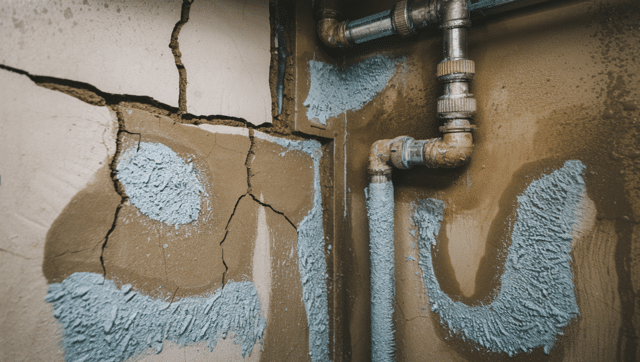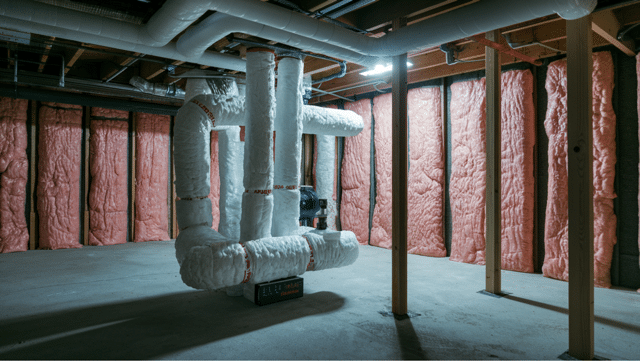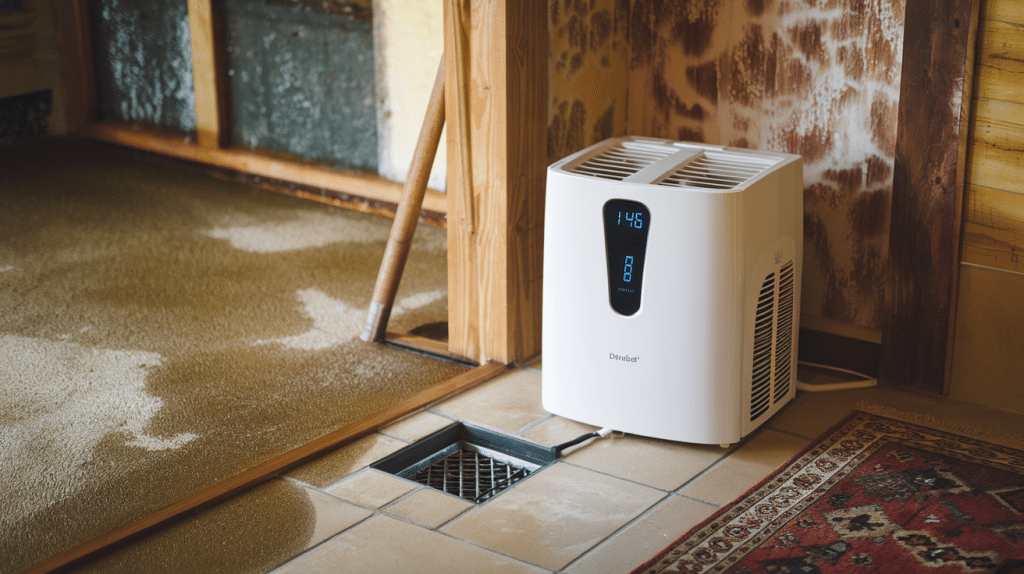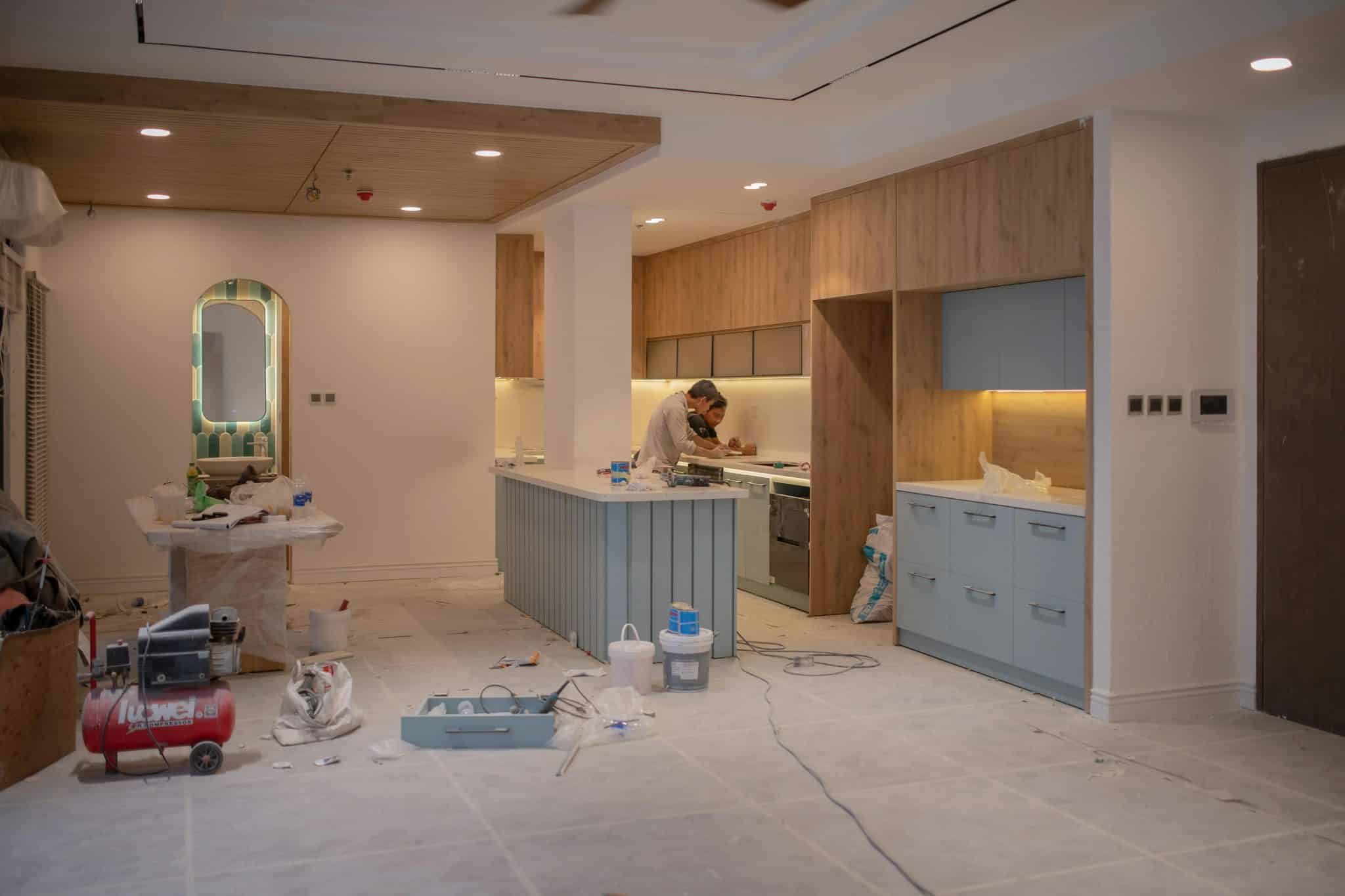Is your basement feeling more like a swamp than a storage space?
Excess moisture in basements is one of the most common homeowner headaches, leading to musty odors, mold growth, and potential structural damage.
That damp, clammy feeling isn’t just unpleasant—it’s a warning sign that could cost you thousands in repairs if left unchecked.
The good news? You don’t have to live with a soggy basement forever. Whether you’re dealing with condensation on walls, standing water, or just that persistent humid feeling, there are proven solutions that work.
From simple DIY fixes you can tackle this weekend to professional-grade systems that offer long-term protection, we’ll walk you through every step to change your basement into a dry, comfortable space.
Ready to reclaim your basement? Let’s explore the most effective moisture-fighting strategies that actually deliver results.
Basement Moisture: Causes & Risks
Basement moisture problems arise from four main sources that can quickly escalate into serious issues.
Poor ventilation traps humid air in below-grade spaces, while high outdoor humidity naturally seeps through foundation materials.
Water seepage occurs when groundwater pressure forces moisture through cracks and porous concrete, and plumbing leaks from pipes or fixtures add unexpected moisture sources.
- Foundation vulnerabilities – Hairline cracks in concrete walls and floors expand over time, creating pathways for water infiltration.
- Condensation patterns – Temperature differences between cool basement air and warm surfaces create water droplets on walls, pipes, and stored items.
- Drainage failures – Clogged gutters, improper grading, and faulty sump pumps allow water to accumulate around foundation perimeters.
Moisture issues can cause mold, wood rot, musty odors, and allergens, posing a risk to both health and home integrity. Controlling moisture is crucial for protection and family safety.
Effective Ways to Reduce Basement Humidity
Controlling basement humidity requires a multi-faceted approach that addresses both moisture sources and air circulation to create a consistently dry environment.
1. Improve Ventilation

Proper air circulation is the foundation of moisture control, helping to move humid air out while bringing fresh, drier air into your basement space.
Installing mechanical ventilation systems ensures consistent airflow, preventing stagnant conditions that allow moisture to accumulate.
- Install exhaust fans in areas with high moisture production, such as near laundry equipment or utility rooms
- Consider energy-efficient HRV (Heat Recovery Ventilation) systems that exchange stale indoor air with fresh outdoor air
- Position dehumidifiers strategically to maximize air circulation and complement ventilation efforts
Note: Ensure outdoor humidity levels are lower than indoor levels before increasing ventilation, as this can sometimes worsen moisture problems during humid seasons.
2. Seal Cracks and Leaks

Eliminating water entry points is crucial for long-term moisture control, as even small cracks can allow significant amounts of water to penetrate your basement.
A systematic approach to sealing helps create a protective barrier against external moisture sources.
- Inspect foundation walls, floors, and window wells regularly for hairline cracks, gaps around pipes, and deteriorating mortar joints.
- Apply hydraulic cement or polyurethane sealants to active leaks, and use flexible caulks for minor cracks that may expand with temperature changes.
- Check all plumbing connections, water heater fittings, and supply lines monthly for signs of leaks or corrosion.
Note: Address active water leaks immediately before applying sealants, as moisture can prevent proper adhesion and cure times.
3. Insulate Pipes and Walls

Insulation prevents condensation by maintaining consistent surface temperatures and reducing the temperature differential that causes water vapor to condense.
This approach addresses moisture at its source, rather than just managing its symptoms.
- Wrap cold water pipes, supply lines, and ductwork with foam pipe insulation to prevent condensation drips.
- Install rigid foam insulation on interior foundation walls to create a thermal barrier and reduce temperature fluctuations.
- Consider vapor barriers behind insulation to prevent moisture from reaching wall surfaces.
Note: Ensure proper ventilation behind insulated walls to prevent trapped moisture, which can lead to hidden mold growth.
4. Use of Dehumidifiers

Dehumidifiers provide active moisture removal and precise humidity control, making them essential tools for maintaining optimal basement conditions. Proper sizing and placement ensure maximum efficiency and consistent results.
- Choose a dehumidifier capacity based on the square footage of your basement and the severity of moisture (typically 30-50 pints per day for average basements).
- Maintain humidity levels between 40% and 60% using built-in hygrometers or separate humidity monitors.
- Position units away from walls and obstacles to ensure proper airflow, and connect to floor drains for continuous operation.
Note: Empty collection tanks regularly if not connected to a drainage system, and clean filters monthly to maintain optimal performance and prevent bacterial growth.
Prevent Water Seepage with Proper Waterproofing Techniques
Comprehensive waterproofing combines exterior and interior approaches to create multiple barriers against water infiltration, ensuring your basement remains dry even during heavy rainfall or seasonal fluctuations in groundwater levels.
| Technique | Application Process | Best For | Cost Range | Longevity |
|---|---|---|---|---|
| Waterproof Foundation Coatings | Excavate around foundation, clean walls, apply membrane or liquid coating, install drainage system | New construction or major renovations | $10,000-$25,000 | 25-30 years |
| Landscaping & Drainage | Regrade soil away from the foundation, install French drains, extend downspouts, and create swales | Moderate seepage issues | $2,000-$8,000 | 15-20 years |
| Sump Pump & Drain System | Install perimeter drains, sump pit, and pump system to collect and redirect water | Active water intrusion | $3,000-$7,000 | 10-15 years |
| Vapor Barrier Installation | Apply plastic sheeting or specialized coatings to walls and floors to block moisture | Humidity control and minor seepage | $1,500-$4,000 | 10-12 years |
Remember, investing in proper waterproofing techniques now can save thousands in potential structural damage and create a healthier living environment for your family.
5 Tips to Combat Basement Moisture
Beyond major waterproofing solutions, these practical tips help maintain a consistently dry basement environment through simple yet effective moisture management strategies.
1. Moisture Absorbers – Natural desiccant products like silica gel, activated charcoal, and calcium chloride containers that passively draw water vapor from air, providing cost-effective humidity control in smaller spaces or as supplemental moisture management.
2. Gutter Maintenance – Regular cleaning and inspection of gutters and downspouts to ensure proper water flow away from the foundation, including removing debris, extending downspouts 6 feet from the house, and repairing leaks.
3. Routine Inspections – Monthly visual checks for early moisture warning signs, including water stains, white chalky deposits, pipe condensation, musty odors, and humidity level monitoring to catch issues before escalation.
4. Professional Consultation – Expert assessment recommended for persistent water intrusion, multiple foundation cracks, recurring mold growth, or when DIY solutions prove insufficient for comprehensive problem identification.
5. Preventive Maintenance – Establishing regular routines including dehumidifier filter cleaning, sump pump testing, caulk inspection, and seasonal preparation to ensure optimal moisture control system function.
Implementing these supplementary moisture control tips in conjunction with primary waterproofing methods creates a comprehensive defense system that keeps your basement dry throughout the year.
Conclusion
Dealing with basement moisture doesn’t have to be overwhelming. You now have a complete toolkit of solutions, from simple ventilation improvements to professional waterproofing systems.
Start with the basics: check your gutters, seal obvious cracks, and improve air circulation. Add a quality dehumidifier to maintain optimal humidity levels between 40-60%.
For persistent problems, invest in comprehensive waterproofing that addresses both interior and exterior moisture sources.
Remember, the key to long-term success is combining multiple approaches rather than relying on a single solution. Regular maintenance and monthly inspections will help you catch issues early before they become costly repairs.
What’s your biggest basement moisture challenge? Share your experience in the comments below, and let us know which solution worked best for your situation.








